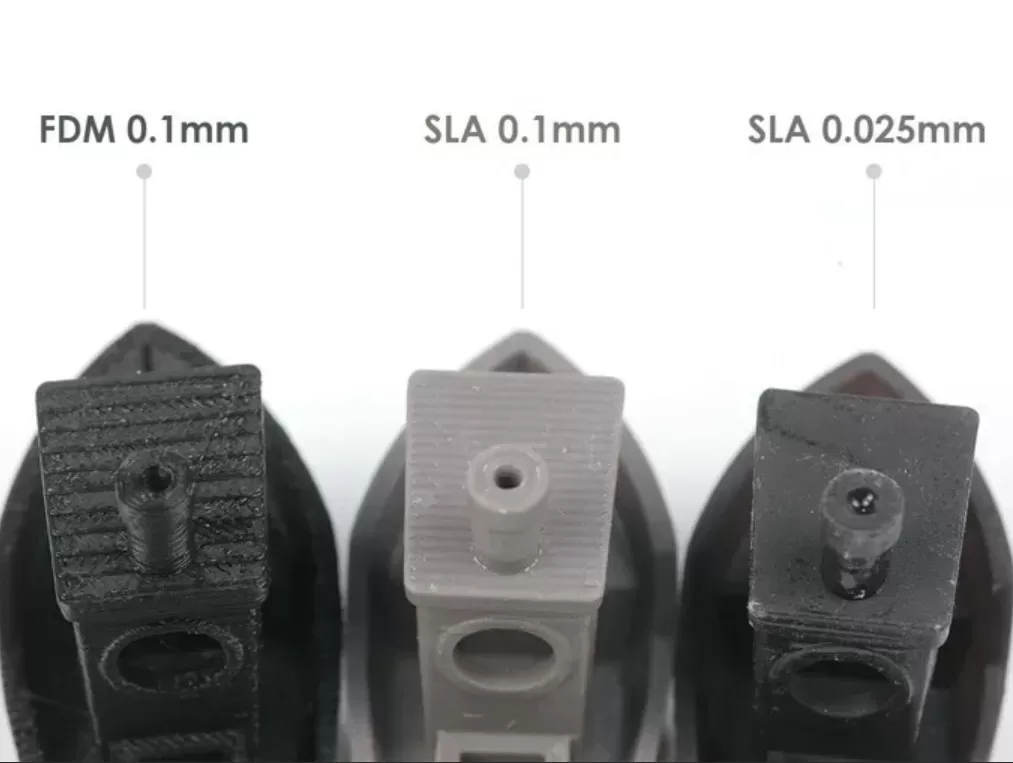3D printing has revolutionized the way we prototype and manufacture products. While the core additive manufacturing process remains the same across different 3D printing technologies, the key differences lie in the materials used and how layers are bonded together to create the final object. The three most common 3D printing methods for consumers and businesses are Fused Deposition Modeling (FDM), Selective Laser Sintering (SLS), and Stereolithography (SLA). In this article, we will explore the capabilities and limitations of each technology to help you determine which is best suited for your application.

Fused Deposition Modeling (FDM)
FDM, also known as fused filament fabrication (FFF), works by feeding rolls of thermoplastic filament, like ABS or PLA, through a heated print head nozzle. The nozzle deposits thin layers of melted plastic that quickly harden to build up the 3D model layer by layer. Being an extrusion-based process, FDM printers tend to have lower upfront costs compared to SLS and SLA machines. They can print models with reasonable accuracy and surface quality using basic thermoplastics.

However, FDM parts typically have visible layer lines and require post-processing like sanding if a smooth surface finish is important. Also, due to using plastics that soften on heating, FDM printed parts have relatively low maximum operation temperatures. Common applications include functional prototypes, models, fixtures, and final products with non-critical surface quality needs. Highly detailed or temperature-sensitive parts are better options for SLS or SLA. Some notable pros and cons of FDM include:
Pros
- Lowest printer and material costs
- Prints basic structural prototypes quickly
- Wide variety of filament materials available
- Easy post-processing like cleaning and painting
Cons
- Visible layer lines and rough surface texture
- Limited to basic thermoplastics only
- Lower strength parts than SLS or SLA
- Prints warp more easily than SLS/SLA
Selective Laser Sintering (SLS)
SLS relies on a high-powered laser to fuse small particles of plastic, metal, ceramic, or composite materials into a solid object. Unlike FDM, SLS does not require support structures as the powder acts as its own support material. This allows it to produce functional prototypes and end-use parts with moving internal features like complex enclosed cavities.
Parts produced with SLS exhibit high durability, temperature and chemical resistance since the laser sinters the powder into a solid structure. Finished parts have a smooth surface comparable to injection molded plastics. Popular materials used in SLS include nylon, glass-filled nylon, and polyamide.
However, SLS printers are substantially more expensive than FDM machines. The process is also slower than FDM and recycling leftover powder adds to material costs. SLS produces the strongest and most dimensionally accurate parts suitable for low to medium volume manufacturing of complex parts. Its pros and cons are:
Pros
- High strength and temperature resistant parts
- No support structures needed for overhangs
- Smooth surface finish requires little post-processing
- Wide range of engineering-grade materials available
Cons
- Highest costs for printers and materials
- Slower printing compared to FDM
- Post-processing needed to remove loose powder
- Limited to powder-bed fusion processes only
Stereolithography (SLA)
SLA functions by curing liquid photopolymer resin into solid parts using ultraviolet light projected from a digital light processing (DLP) projector or laser. It achieves exceptional surface quality and resolution on the scale of 50 microns. The process works well for tiny casts and molds which FDM may struggle with. Finished parts have a glossy, smooth surface like injection molded plastic.
Materials used in SLA also deliver sturdier mechanical properties than basic FDM plastics. Resins with high heat tolerance, biocompatibility and corrosion resistance expand its suitability for more demanding applications. SLA is the preferred method for producing jigs, fixtures, small high-precision parts and prototyping intricate assemblies or enclosures. Major pros and cons include:
Pros
- Sharpest details and finishes of all methods
- Biocompatible resins available for dental/medical models
- Fast turnaround times for small batches
- Materials match properties of injection molded parts
Cons
- Most expensive setup and materials costs
- Additional post-curing needed for some resins
- Toxic resin handling and vat cleaning required
- Limited build size of desktop machines
Choosing the Right Technology
To determine the best fit 3D printing process, consider your design complexity, surface quality demands, production volumes and budget. FDM works well for basic prototypes, visual aids and fixtures. SLS produces top-quality conceptual models and functional prototypes while SLA creates hyper-detailed casts/molds and medical/dental models.
SLS and SLA deliver smoother surfaces and finer details but at a higher cost. While SLA gives the finest resolution, it struggles with large parts. SLS prints larger with many materials and complex geometries. For strength and temperature- tolerant end-use parts, SLS is preferable to basic FDM plastics.
In summary, SLA suits low volume precision parts; SLS for complex prototypes and manufacturing; while FDM works well for visual designs, fitting, and arrangements on tight budgets. Matching application needs to each technology ensures optimized 3D printing outcomes.

Start Leveraging the Power of 3D Printing with Our Expert Guidance
Are you looking to take advantage of 3D printing for your business or project? Contact us today to discuss your requirements and get a free consultation and estimate. Our experts can help determine the best 3D printing process, setup, and ongoing support solutions to meet your needs within budget. Let's explore how additive manufacturing can accelerate your product development and production.




